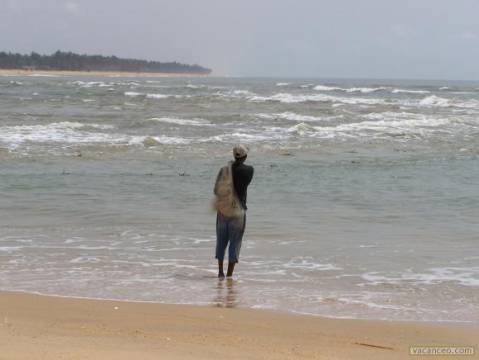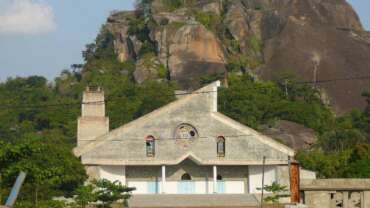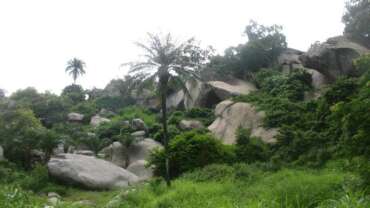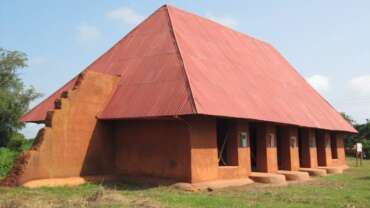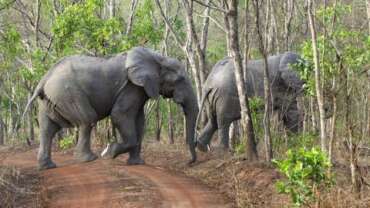Experience different regions of Benin
The Atlantic is a department located in the south of Benin . It is subdivided into 8 municipalities:
Abomey-Calavi
Allada
Kpomasse
Ouidah (prefecture)
So-Ava
Toffo
Tori
Zè
In 1999 , the urban district of Cotonou , until then the capital of the Atlantic province , became the Littoral department. As tourist assets, we have ” Ganvié “. By its charm and its particular attraction, Ganvié is regarded as “The African Venice”.
This lakeside town is located on the northwest shore of Lake Nokoué, at the western outlet of the Sô river, in Nokoué, 8 km from Abomey-Calavi and 25 km as the crow flies from Cotonou.
The tourist can therefore visit in the department of the Atlantic, this unprecedented wonder. Ganvié, the “Vénise d’Afrique”, is the metropolis of lake villages located on Lake Nokoué such as So-Ava, So-Tchanhoué, Houédo, Aguékon, So-Zounko …
These lakeside villages where the inhabitants live on stilts in middle of the lake and where all activities take place entirely on the water, are unique in Africa …
Further west is Ouidah, a former slave trading post, seat of Vodoun, a religious city where a major seminary trains priests for Benin and the sub-region; syncretic city par excellence where the cathedral and temple of the sacred pythons face each other.
There are still old houses, of the same style as those that exist in the Antilles, Saint-Louis in Senegal, etc.
Alibori
The Alibori is a department located in northern Benin.
The “W” National Park is one of the tourist areas par excellence.
There are many markets in the region including that of Malanville which is the star. The Alibori is also an area of high cotton production .
There are the following municipalities:
Banikoara
Gogounou
Kandi (prefecture)
Karimama
Malanville
Segbana
Borgou
The Borgou is a department located in the east of Benin , on the border with Nigeria . Its prefecture is Parakou.
Parakou is the capital of the department. The Borgou is mainly populated by Bariba , Peuhl , Dendi and Yoruba .
The department of Borgou is of tourist interest due to the predominance of the historical-cultural character of this region, of which the festival of Gani, organized annually in Nikki, the historic capital of the Batombu, constitutes a major event.
Parakou, a cosmopolitan city, houses a colorful market and has an open-air museum. From Parakou , the tourist can visit the villages of Tourou and Gnou famous for their pottery, Nikki , ancient and historical capital of the world Bariba , the sacred caimans of Dawari and Sinendé , the tomb of Bio Guerra , national hero in Baourou ( Bembèrèkè ) etc. …
There are also the following cities:
Bembereke
Kalale
N’Dali
Nikki
Father
Sinendé
Chaourou
Mono
The Mono is a department located in the southwest of Benin , created in 1999 . It has 370,000 inhabitants. Its prefecture is Lokossa.
Lokossa is the administrative capital of the department . The Mono is populated with Adja , his , Xwla , mina , sahouè , kotafon , Ayizo etc.
This department is characterized by a dense hydrographic network offering the possibilities of a new type of tourism:
A tourism of movement which uses the rivers as a means of natural penetration. One can contemplate in particular immense beaches of coconut palms, the semi-lacustrine village of Guézin.
The thermal springs of Possotomé and Bopa on the west shore of Lake Ahémé give rise to a spa stay .
The Belvédère de Bopa offers a beautiful view of Lake Ahémé ; la Bouche du Roy , a natural wonder combining a beautiful beach under coconut palms with this permanent struggle of the meeting of the Mono river with the Atlantic Ocean .
There are also the following municipalities:
Athieme
Bopa
Comè
Grand-Popo
Houéyogbé
Oueme
The Ouémé is a department located southeast of Benin , created in 1999 . It takes its name from the Ouémé river which crosses it to empty into the Gulf of Benin .
The Ouémé is predominantly populated by Goun , Tori , Yoruba .
It is full of tourist attractions, in particular: Porto-novo , historic city and administrative capital, houses an ethnographic museum, the former palace of the governors and an authentically royal palace, now a historical museum.
Its Brazilian architecture, its winding and cemented streets do not fail to arouse the attention of tourists in search of the unusual.
Les Aguégués, lakeside city, original by the coexistence of the lake, the mainland and the forest.
The Ajarra market made famous by its potters and basket makers with a thousand talents.
The thermal springs of Hêtin-Sota and Bonou. The sacred temples of fetishes dot this department, the splendor of which is enhanced by annual ceremonies. Cultural resources such as the Egungouns in Ouémé, etc.
In particular, we find the capital of the country, Porto-Novo , as well as the following municipalities:
Adjarra
Adjohoun
Aguégués
Akpro-Missérété
Avrankou
Good
Dangbo
Sèmè-Kpodji
The Hills
Les Collines is a department in central Benin. The department is populated Mahi , Idaatcha , Nagot , Shabe , Yoruba , Fulani , etc.
The tourist circuit of the hills leads to Dassa-Zoumé with its natural wonders, to Savalou where you can attend the magnificent traditional dance festivals that are performed on the occasion of the annual ceremonies (the feast of August 15 for example) , and in Savé, at the foot of three hillocks, a true natural limit between the south and the north of Benin.
As other tourist resources in the Collines department, there is also the sacred caiman river of Bantè , the Marian cave of Arigbo , etc.
This is subdivided into 6 municipalities:
Bantè
Dassa-Zoumè
Glazed
Ouèssè
Savalou (prefecture)
Savè



